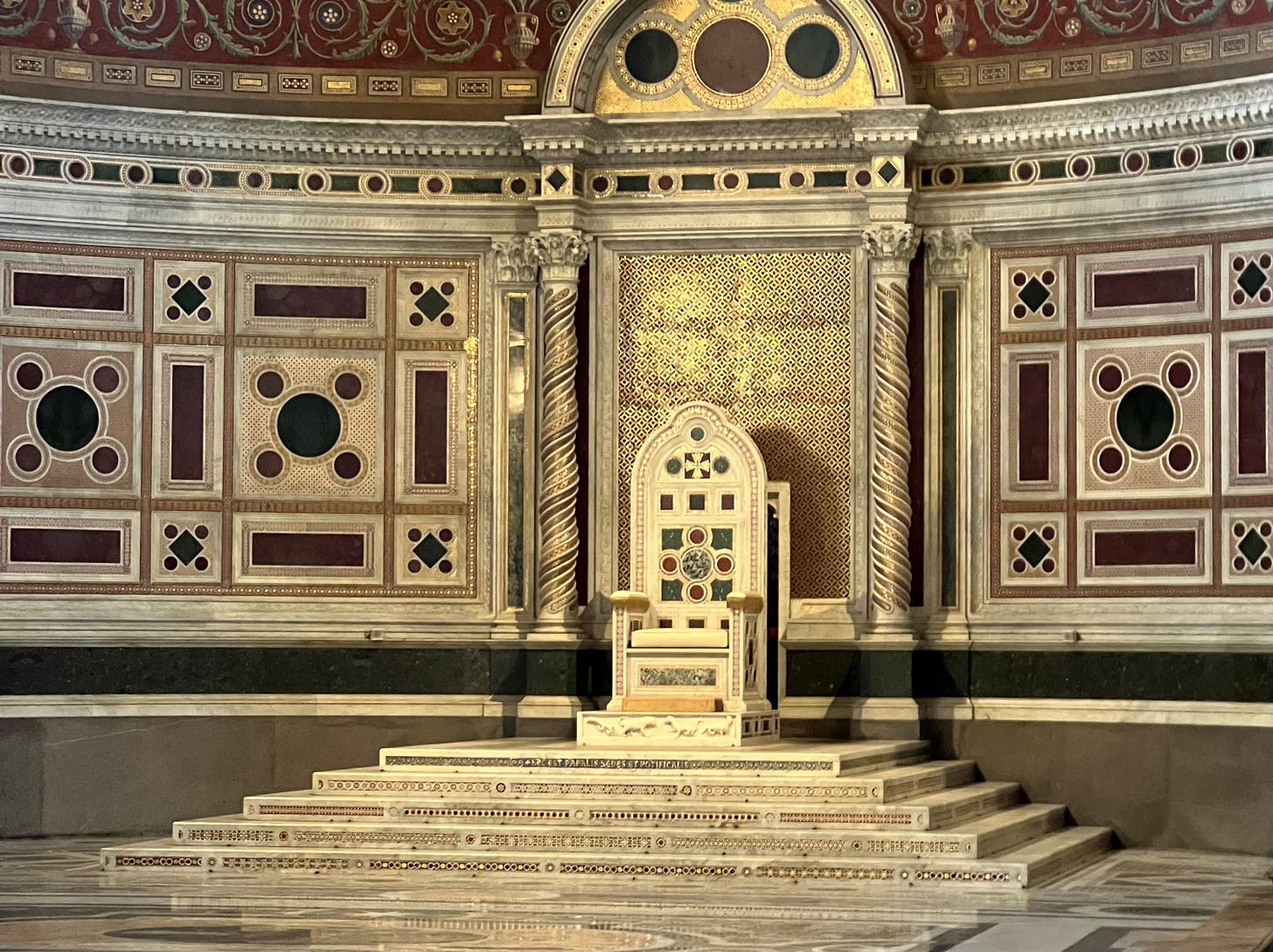Why is it called the "Holy See"?
The ecclesiastical word “See” comes from the Latin sedes, which is a “chair.” Sedes, you’ll notice, is not far off from the English word “seat.” The phrase “Holy See,” then, is a reference to the seat of authority from which the Pope governs the universal Church.
In the Judeo-Christian tradition, seats or chairs function as symbols of teaching authority. In Jesus’ time, rabbis would sit on a chair or bench while their students sat on the floor before them.1 This is why, all throughout the Gospels, Jesus sits down before teaching. Before the Sermon on the Mount, we read that “when [Jesus] sat down his disciples came to him. And he opened his mouth and taught them” (Mt 5:1-2). He did the same at the Mount of Olives (Mt 24:3) and again when he taught in the synagogue (Lk 4:20).
Jesus explicitly mentioned this tradition when he remarked that, despite their hypocrisy, the scribes and Pharisees “sit on Moses’s seat” and therefore possess a genuine authority to teach. Because of this, he insisted his disciples “practice and observe whatever they [say], but not what they do” (Mt 23:2-3).
There is reason to believe that Jesus’s reference to “Moses’s seat” was a reference to literal chairs in ancient synagogues. Indeed, archaeological remains in Israel suggest that, in some synagogues, prominent chairs – seats of Moses – were erected from which the rabbis taught.2
This notion has been carried over, by way of the Roman Emperor’s throne of authority, into Christianity and into the Catholic notion of teaching authority. The other Latin word Catholics use in this regard is cathedra, which also means “chair,” “seat,” or “throne.” When the pope teaches infallibly, for instance – when he exercises the full capacity of his teaching authority (an event which is rare) – he is said to be teaching ex cathedra or “from the chair.”
This idea also refers to a literal chair. Though, of course, the pope does not actually need to be seated in it, the literal chair or seat of his authority is housed at the Archbasilica of Saint John Lateran in Rome (pictured above). This chair, and the authority it represents, is what is being referred to when we speak of “the Holy See.” Indeed, because the Lateran houses the pope’s cathedra, it is actually the mother church for all of Catholicism, not St. Peter’s Basilica where the pope resides and typically offers his teachings.
Of course, it’s not just the pope who has a seat of authority, who maintains a “See.” You’ll sometimes hear about the “See of Constantinople” or the “See of Antioch.” The 3rd century Church Father Tertullian wrote of the churches in which the original apostles died, “in which the very thrones [cathedrae] of the apostles are still pre-eminent in their places.”3 But there are actually seats of authority in each and every diocese across the world. In fact, a diocese’s “cathedral” is so named because it is where the bishop’s cathedra or chair of authority is housed. The cathedra is the seat, the chair, the See from which the local bishop teaches and governs.
See Daniel J. Harrington, The Gospel of Matthew (The Liturgical Press, 1991), 78.
See E.L. Sukenik, Ancient Synagogues in Palestine and Greece (London, 1934), 57-61; Kenneth, G.C. Newport, “A Note on the Seat of Moses,” Andrews University Seminary Studies 28, no. 1 (Spring 1990): 53-58.
Tertullian, De Praescriptione Haereticorum, 36.1.





